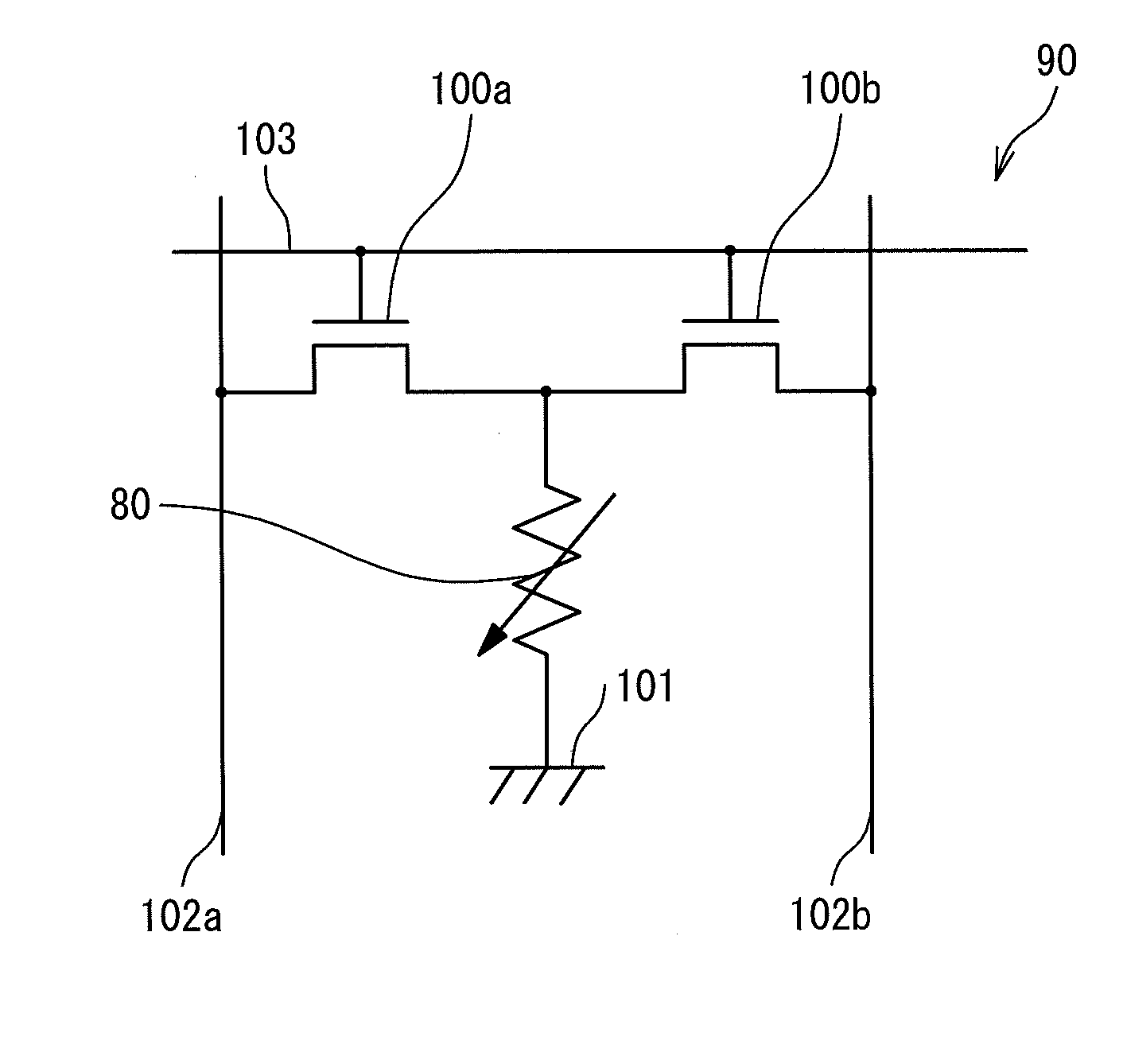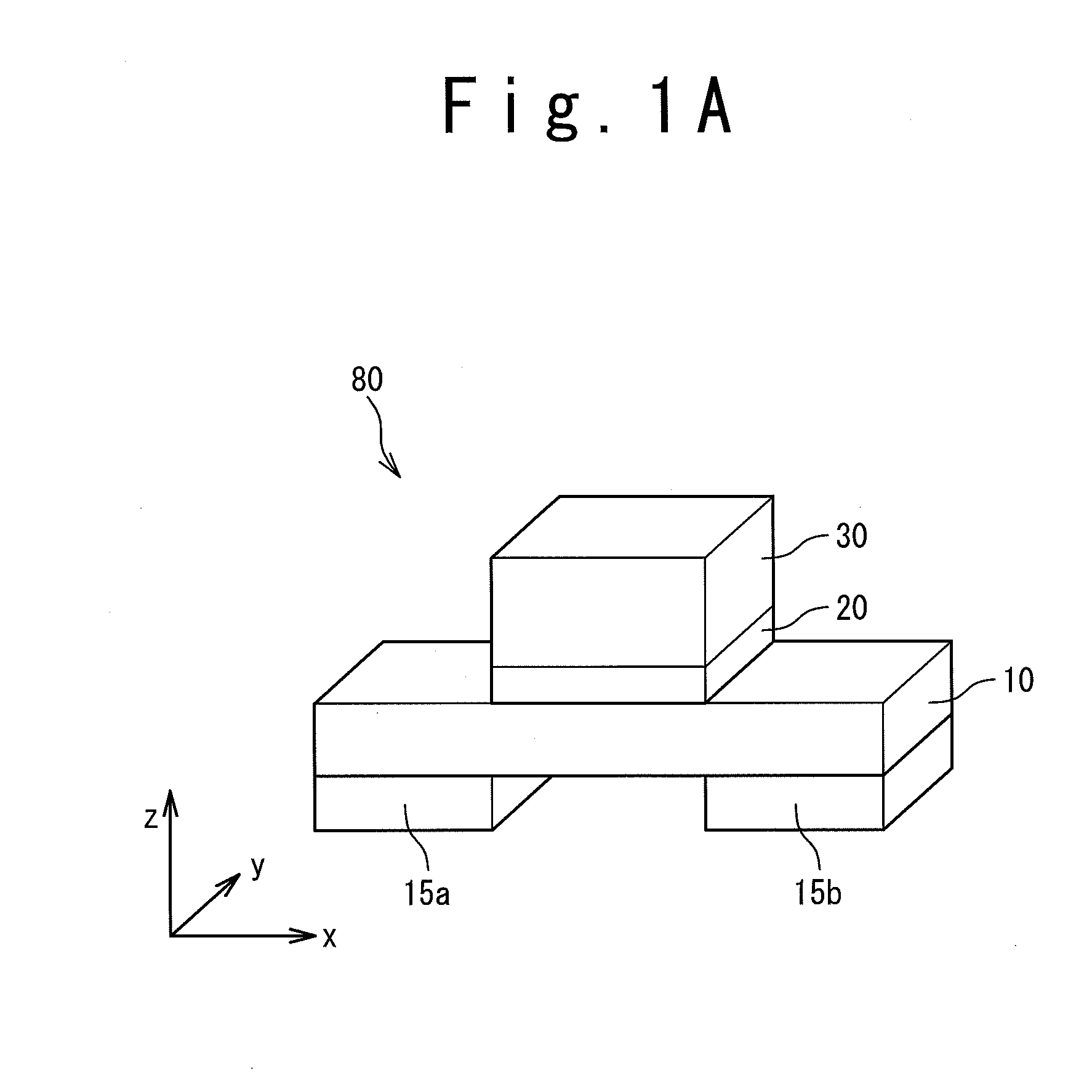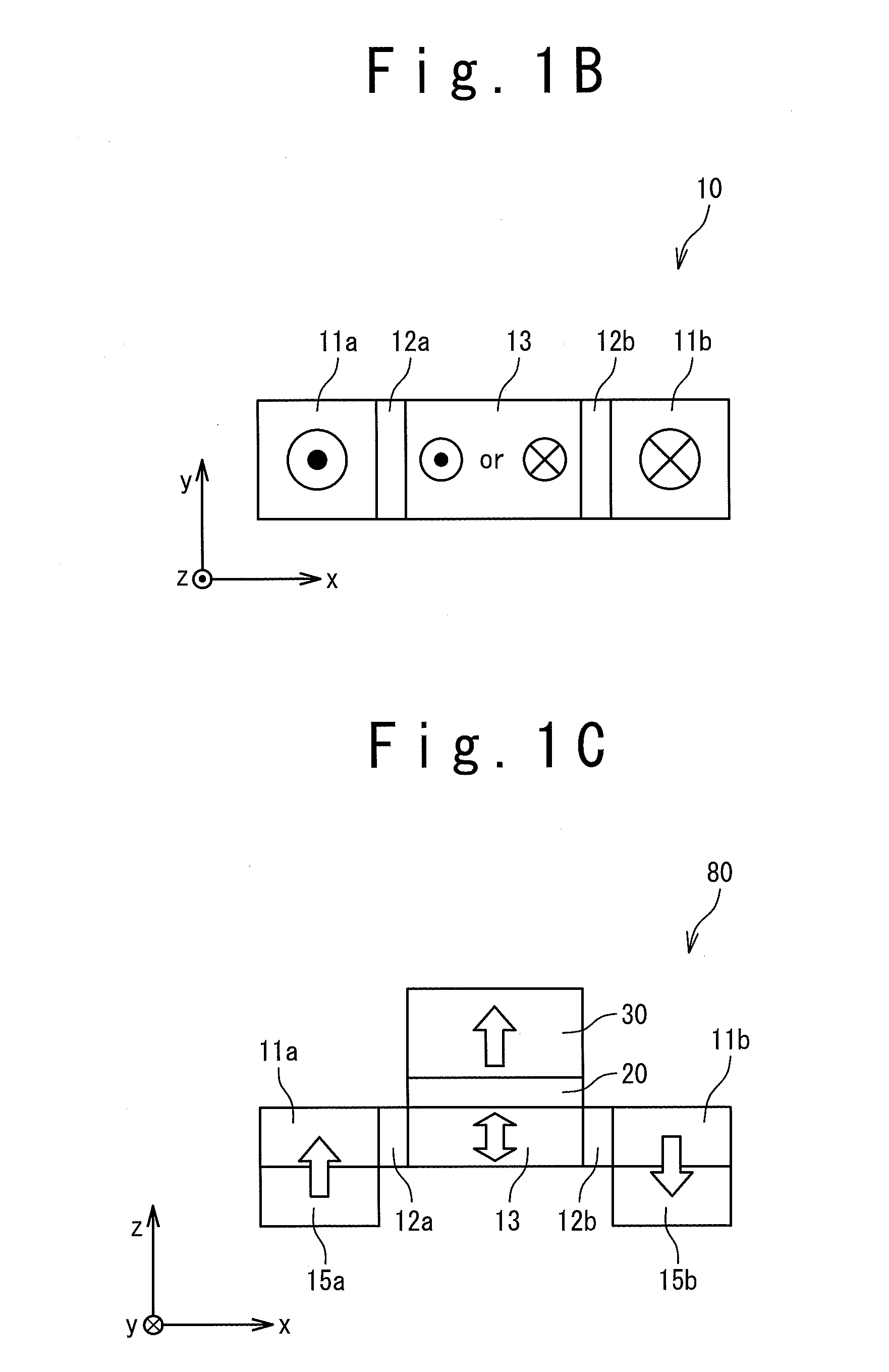Magnetoresistance effect element and magnetic random access memory
a random access memory and magnetoresistance effect technology, applied in the field of magnetoresistance effect elements and magnetic random access memory, can solve the problems of increasing the chip area, increasing the power consumption of writing, and inferiority of mram to other random access memory in competitiveness, so as to achieve sufficient reduction of write current, the effect of reducing the current density and sufficiently reducing the write curren
- Summary
- Abstract
- Description
- Claims
- Application Information
AI Technical Summary
Benefits of technology
Problems solved by technology
Method used
Image
Examples
first exemplary embodiment
(Configuration of Magnetoresistance Effect Element)
[0054]FIG. 1A is a perspective view illustrating the configuration of a main portion of a magnetoresistance effect element 80 in a first exemplary embodiment of the present invention. In the following, a description is given with an xyz Cartesian coordinate system defined as illustrated in FIG. 1A. FIG. 1B is an x-y plan view illustrating the configuration of the magnetoresistance effect element 80, and FIG. 1C an x-z cross-sectional view illustrating the configuration of the magnetoresistance effect element 80.
[0055]As illustrated in FIG. 1A, the magnetoresistance effect element 80 includes: a magnetization free layer 10 extending in the x direction; a spacer layer 20 provided adjacent to the magnetization free layer 10; a first magnetization fixed layer 30 provided adjacent to the spacer layer 20 on the opposite side of the magnetization free layer 10; and second magnetization fixed layers 15a and 15b provided adjacent to the both...
second exemplary embodiment
[0103]FIGS. 12A and 12B schematically illustrate structures of the magnetoresistance effect element 80 in a second exemplary embodiment of the present invention, in particular, structures of the magnetization free layer 10. The magnetoresistance effect element 80 of the second exemplary embodiment is related to domain wall pinning sites 12a and 12b in the magnetization free layer 10, and formed such that the domain wall pinning sites 12a and 12b bind the domain wall more strongly.
[0104]As illustrated in FIG. 12A, modulation of the planar shape in the x-y plane provides strong binding of the domain wall. Although FIG. 12A is an exemplary embodiment in which the magnetization free layer 10 is patterned with notches, projections or the like may be provided alternatively. Also, as illustrated in FIGS. 12B and 12C, modulation of the cross-sectional shape in the x-z cross-section provides strong binding of the domain wall at the domain wall pinning site 12a or 12b. As illustrated in FIG. ...
third exemplary embodiment
[0106]FIGS. 13A to 13D schematically illustrate structures of the magnetoresistance effect element 80 in a third exemplary embodiment of the present invention, in particular structures of the magnetization free layer 10. The third exemplary embodiment is related to the shape of the magnetization free layer 10, and achieves notably stable binary states.
[0107]In the case of the perpendicular magnetization film, a state where the domain wall stops in the middle of the domain wall motion portion 13 is not so unstable. Such state, which is an intermediate state between “0” and “1”, should be avoided. Meanwhile, the domain wall tends to move in a direction that decreases the area thereof as much as possible to reduce the energy of the entire system. Accordingly, when a portion at the middle of the domain wall motion portion 13 has a wider width than the other parts, the portion becomes unstable, and therefore the intermediate state described above is eliminated. Schematic diagrams illustr...
PUM
 Login to View More
Login to View More Abstract
Description
Claims
Application Information
 Login to View More
Login to View More - R&D
- Intellectual Property
- Life Sciences
- Materials
- Tech Scout
- Unparalleled Data Quality
- Higher Quality Content
- 60% Fewer Hallucinations
Browse by: Latest US Patents, China's latest patents, Technical Efficacy Thesaurus, Application Domain, Technology Topic, Popular Technical Reports.
© 2025 PatSnap. All rights reserved.Legal|Privacy policy|Modern Slavery Act Transparency Statement|Sitemap|About US| Contact US: help@patsnap.com



